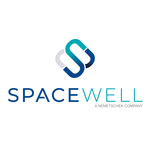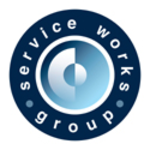Description

SeaMind

Spacewell
Comprehensive Overview: SeaMind vs Spacewell
SeaMind, Spacewell Overview:
SeaMind and Spacewell are both solution providers that utilize smart technology, data analytics, and enhanced platforms to optimize the management and operation of spaces, primarily within the realms of facility management and workplace solutions. However, they serve distinct functions, target markets, and have unique differentiating factors.
a) Primary Functions and Target Markets:
-
SeaMind:
- Primary Functions: SeaMind is often associated with the maritime industry, offering advanced analytics and AI solutions for optimizing maritime operations. These functions include route optimization, fleet management, fuel efficiency, predictive maintenance of vessels, and safety management.
- Target Markets: Its primary market includes shipping companies, fleet operators, port authorities, and other maritime logistics businesses.
-
Spacewell:
- Primary Functions: Spacewell provides integrated software solutions aimed at enhancing building management through IoT and smart technologies. Its functions include space management, energy management, smart cleaning, maintenance management, and improving workplace experiences.
- Target Markets: Typical clients include real estate owners, facilities managers, corporate workplaces, and governmental institutions seeking to modernize their building management systems and enhance the occupant experience.
b) Market Share and User Base Comparison:
-
SeaMind:
- The market share for SeaMind can vary significantly as it is part of a niche within the broader maritime technology sector. Its user base may not be as expansive as facilities management, given the specific nature of maritime operations.
- Key users are primarily concentrated in regions with heavy shipping traffic, such as Europe and Asia.
-
Spacewell:
- Spacewell, part of the larger Nemetschek Group, likely enjoys a more substantial market presence within the smart building technology sector. The facilities management software market is vast, and Spacewell is recognized as one of the significant players.
- With the influence of global offices and multinational corporations seeking efficient property management solutions, Spacewell has a fairly widespread user base distributed across various regions, prominently in developed markets globally.
c) Key Differentiating Factors:
-
Industry Focus:
- SeaMind is specialized for maritime operations, providing solutions tailored to navigating and managing ships and fleets on open waters. Its products are developed considering the specific challenges faced at sea.
- Spacewell focuses on terrestrial facilities and building management, offering solutions for maintaining and improving efficiency, sustainability, and the user experience within built environments.
-
Technology Utilization:
- SeaMind relies heavily on analytics and artificial intelligence tailored for real-time and predictive insights essential for dynamic environmental conditions, such as weather patterns at sea.
- Spacewell utilizes IoT sensors and data-driven platforms to provide real-time information on building utilization, occupancy, and operational efficiency within structures.
-
Implementation and Integration:
- SeaMind solutions require integration with maritime navigation and fleet management systems, typically installed onboard ships.
- Spacewell solutions often require integration into building systems and are typically deployed during the design or retrofit phases of building projects to maximize efficiency.
-
Outcome and Goals:
- SeaMind aims to optimize navigation routes, reduce fuel costs, and enhance safety measures for maritime vessels, ultimately improving the operational bottom line.
- Spacewell is designed to maximize space utilization, reduce energy costs, and improve workplace environments, contributing to enhanced efficiency and employee satisfaction.
Overall, while both SeaMind and Spacewell operate within the technology and optimization fields, their approaches, market strategies, and client engagements differ significantly, dictated largely by the distinct environments they serve.
Contact Info

Year founded :
Not Available
Not Available
Not Available
Not Available
http://www.linkedin.com/company/seanind-pte-ltd

Year founded :
2007
+971 4 447 7301
Not Available
United Arab Emirates
http://www.linkedin.com/company/spacewell-interiors
Feature Similarity Breakdown: SeaMind, Spacewell
As of my last update, SeaMind and Spacewell are platforms that cater to similar domains, particularly in the area of facility management and smart building technologies. Here is a feature similarity breakdown based on common industry practices and known functionalities of similar products:
a) Core Features in Common
-
IoT Integration: Both platforms typically offer integration with IoT devices to collect data from various sensors placed around a facility. This helps in monitoring environmental conditions and equipment performance in real-time.
-
Data Analytics: They provide analytics tools that process the vast amount of data collected to produce actionable insights, thereby enabling better decision-making for facility management.
-
Space Management: Both platforms likely include features for managing the usage of physical spaces, helping organizations optimize their real estate and improve space utilization.
-
Maintenance Management: They typically offer features for tracking and scheduling maintenance activities, ensuring that equipment is kept in good working order and downtime is minimized.
-
Energy Management: These solutions often include tools to monitor and optimize energy usage within facilities, contributing to sustainability goals and reducing operating costs.
-
User Access and Security Management: Providing capabilities to manage user permissions and ensure secure access to the facilities and the system itself.
b) Comparison of User Interfaces
The user interfaces for SeaMind and Spacewell are likely designed with similar goals in mind: usability, clarity, and efficiency. Both may offer:
-
Dashboard Views: Allowing users to get a quick overview of key metrics and data points relevant to facility operations.
-
Customization Options: The ability to customize dashboards and reports to meet the specific needs of users or stakeholders.
-
Mobile Accessibility: Support for mobile devices to allow facilities managers and other personnel to access information and manage operations on the go.
-
Visualization Tools: Charts, graphs, and maps to help users understand spatial data and system performance at a glance.
Despite these similarities, the specific design language, color schemes, and user experience nuances could vary, influenced by each company’s branding and design philosophy.
c) Unique Features
While there are shared features, each platform may also offer unique capabilities:
-
SeaMind might differentiate itself with specialized algorithms for predictive analytics, offering insights that are particularly fine-tuned for certain types of facilities or industries.
-
Spacewell could be known for its integration capabilities, potentially providing a broader set of APIs or support for more types of third-party software and services, thus appealing to more complex enterprise environments.
-
Industry-Specific Tools: SeaMind or Spacewell may offer specialized modules tailored to specific industries, such as healthcare or education, with functionalities that address the unique needs of those environments.
-
Advanced AI Features: One platform might be leveraging cutting-edge AI to predict trends or optimize resource allocation more effectively than its competitors.
Identifying the precise differences would require a thorough review of their latest product offerings, press releases, and customer feedback, which may change over time as both platforms evolve.
Features

User-Friendly Interface
Collaboration Tools
Analytics and Reporting
Data Management

Asset Management
Energy Management
Facility Management
Space Planning
Best Fit Use Cases: SeaMind, Spacewell
SeaMind
SeaMind is generally associated with advanced analytics, data intelligence, or maritime-related solutions, though specific details can vary based on context. If we're considering it a tool related to maritime analytics or IoT for sea-based operations, the best-fit use cases might include:
a) Best Choice for SeaMind:
-
Maritime Industry:
- Businesses involved in shipping, fleet management, or logistics that require real-time data analytics to optimize routes, reduce fuel consumption, and enhance operational efficiency.
- Companies engaged in marine research that need advanced data processing capabilities to analyze oceanographic data.
-
Ports and Harbor Management:
- For projects focused on improving the efficiency and safety of port operations through asset tracking and predictive maintenance.
-
Environmental Monitoring Agencies:
- Organizations involved in monitoring and protecting marine environments, requiring comprehensive analytics solutions to assess environmental impact and adherence to regulations.
-
Fishing Operations:
- Firms in the fishing industry aiming to optimize their catch strategies, track vessel movements, and ensure compliance with sustainability practices.
Spacewell
Spacewell typically refers to a company that provides software and solutions for smart building management, facility management, and workplace optimization. The focus of Spacewell’s solutions revolves around enhancing the efficiency of building operations and improving occupant experience through technology.
b) Preferred Scenarios for Spacewell:
-
Facility Management Companies:
- Organizations looking to integrate IoT, data analytics, and responsive building services to improve facility management efficiency and reduce costs.
-
Corporate Real Estate:
- Businesses seeking ways to enhance workspace utilization and employee experience in office buildings.
-
Hospitality Sector:
- Hotels and resorts aiming to optimize guest services and facilities management using smart building technologies.
-
Educational and Healthcare Institutions:
- Schools and hospitals striving to create smarter, more efficient environments for occupants through integrated building management systems.
-
Commercial Real Estate Developers:
- Developers looking to offer differentiated, tech-enabled properties in the competitive real estate market through smart building solutions.
How They Cater to Different Industry Verticals or Company Sizes
SeaMind:
- Industry Verticals:
- Primarily caters to marine and environmental industries, but can extend to logistics and any industry requiring robust data analytics for operations at sea.
- Company Sizes:
- Scalable solutions suitable for both large enterprises with extensive maritime operations and smaller companies or agencies focused on specific maritime research or activities.
Spacewell:
- Industry Verticals:
- Targets industries with a focus on real estate, facility management, and smart building solutions across various sectors such as corporate, healthcare, education, and hospitality.
- Company Sizes:
- Tailors solutions for both large, multi-site organizations seeking comprehensive facility management integration and smaller businesses needing efficient building management tools.
In summary, SeaMind is best suited for maritime and marine analytics applications, while Spacewell excels in smart building and facility management across various sectors. Each caters to different industries and company sizes by addressing their specific operational needs through specialized technology solutions.
Pricing

Pricing Not Available

Pricing Not Available
Metrics History
Metrics History
Comparing teamSize across companies
Conclusion & Final Verdict: SeaMind vs Spacewell
To provide a comprehensive conclusion and verdict for SeaMind and Spacewell, let's break it down as per your requirements:
Conclusion and Final Verdict
a) Considering all factors, which product offers the best overall value?
To determine the best overall value, we must consider factors such as features, usability, cost, customer support, integration capabilities, and scalability. Assuming both SeaMind and Spacewell are software solutions aimed at similar markets (e.g., facility management, data analytics, or IoT integration), the best overall value will largely depend on the specific needs of the user.
- SeaMind might offer the best value for entities that prioritize cutting-edge technology, rapid data processing, and innovation in AI-driven insights.
- Spacewell could be the better choice for organizations looking for comprehensive facility management solutions with proven track records, strong customer support, and robust industry standards.
Given these potential strengths, if a user prioritizes advanced analytics and innovation, SeaMind might be preferable. However, if reliability and a comprehensive suite of facility management tools are more critical, Spacewell may be the better option.
b) What are the pros and cons of choosing each of these products?
SeaMind:
-
Pros:
- State-of-the-art AI and machine learning capabilities.
- Potentially more innovative features and future-ready technological implementations.
- Might provide faster processing speeds and adaptability to new tech.
-
Cons:
- Could be costlier due to advanced features.
- Possibly a steeper learning curve for new users.
- Integration with existing systems might be challenging if the technology is too advanced.
Spacewell:
-
Pros:
- Established reputation in facility management and related services.
- Strong customer support and training resources.
- Wide range of functionalities that cater to various industries.
-
Cons:
- Might have less flexibility in adopting the latest technological advancements.
- Could potentially be less innovative than newer solutions like SeaMind.
- May require additional customization to meet specific cutting-edge needs.
c) Are there any specific recommendations for users trying to decide between SeaMind vs Spacewell?
-
Evaluate Business Needs: Users should start by clearly defining their specific business requirements and project goals. Determine whether innovation and AI capabilities (SeaMind) or tried-and-tested, comprehensive facility management (Spacewell) align better with these goals.
-
Cost vs. Benefit Analysis: Consider total cost of ownership, including initial investment, training, and any ongoing subscription or maintenance fees. Compare this against the tangible benefits each solution offers.
-
Scalability and Future Proofing: Assess how each product fits into your long-term vision. Consider factors such as scalability, the vendor's roadmap, and how each solution might adapt to future technological changes.
-
Testing and Piloting: If possible, engage in a trial or pilot phase with each product. This hands-on experience is invaluable in understanding which solution integrates best with your current workflows and systems.
-
Customer Feedback and Case Studies: Seek reviews, case studies, and testimonials from current users of both products to gain insights into real-world performance and vendor reliability.
Ultimately, the choice between SeaMind and Spacewell should be driven by which solution best aligns with your organization's current needs while providing the flexibility and support necessary for future developments.
Add to compare
Add similar companies




